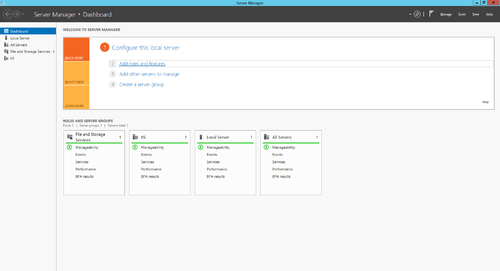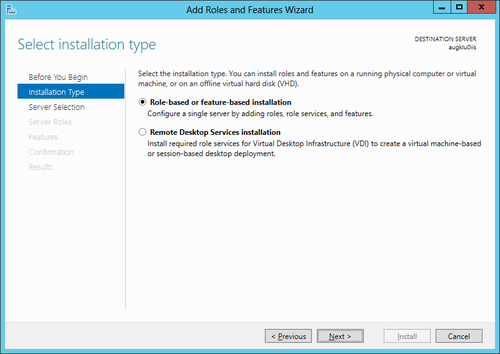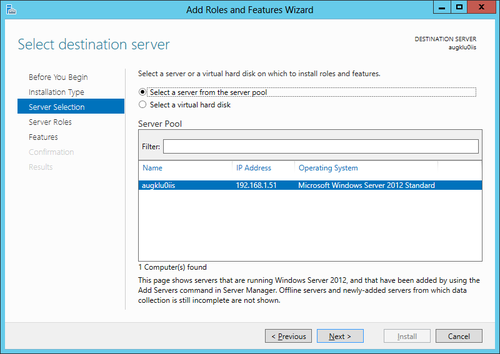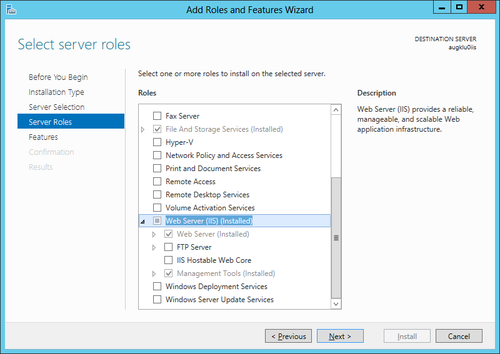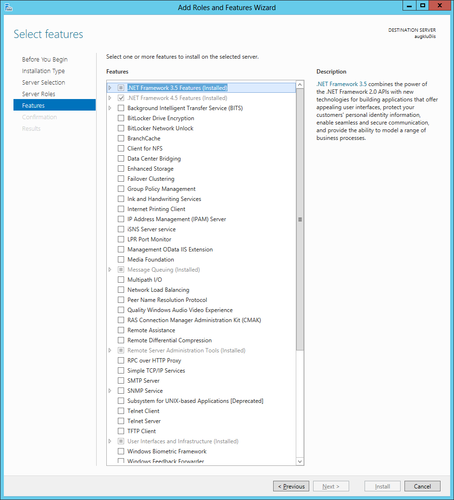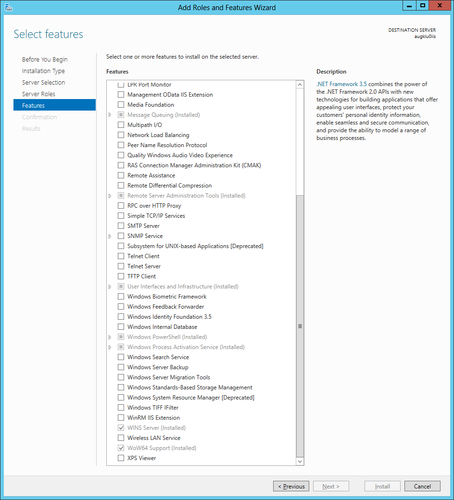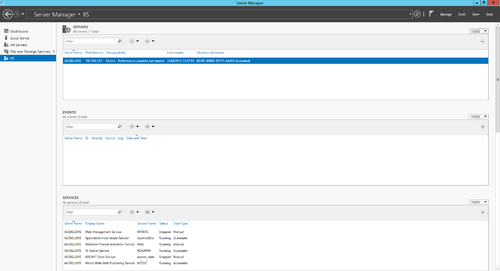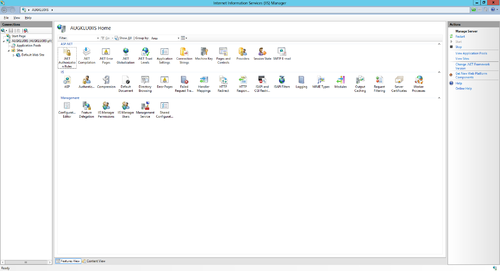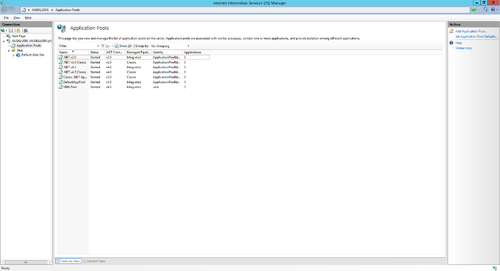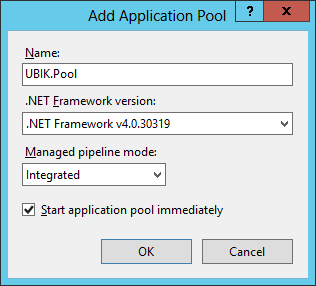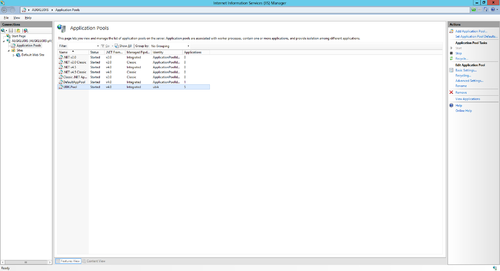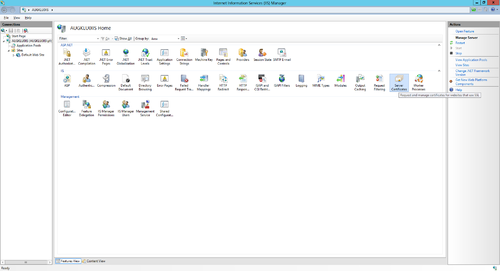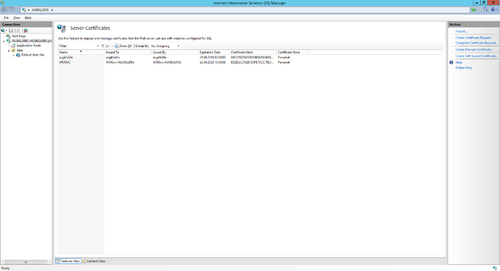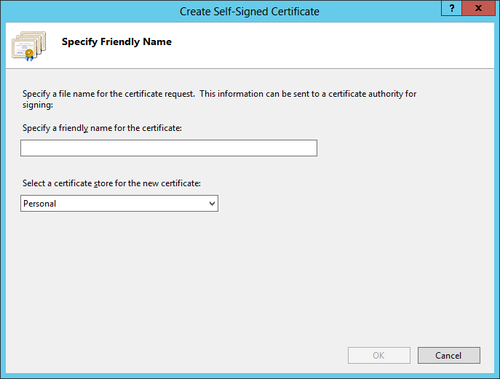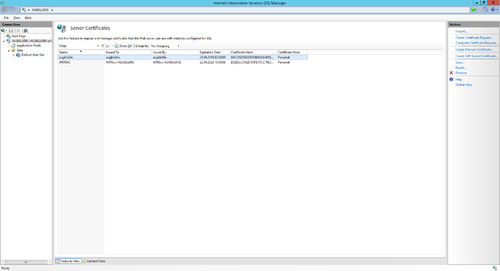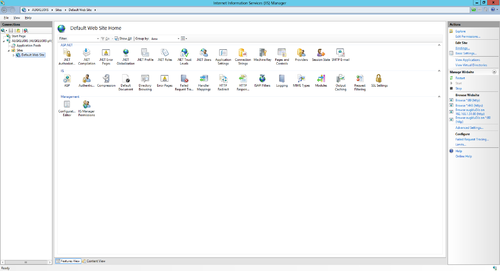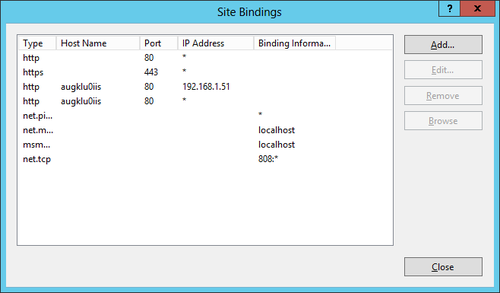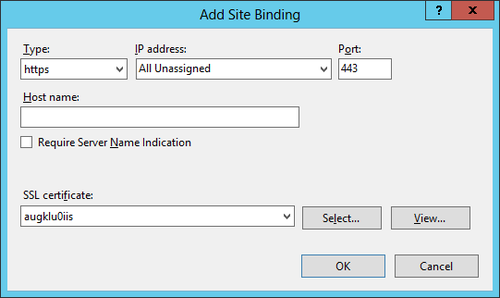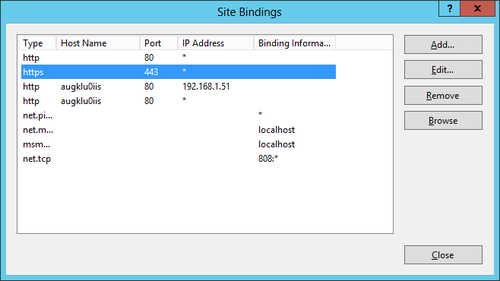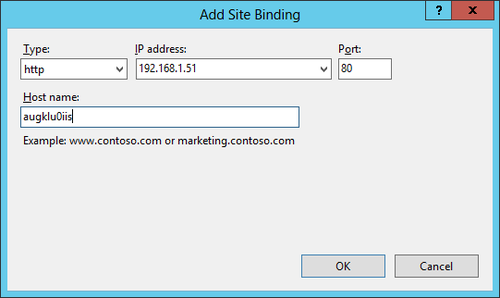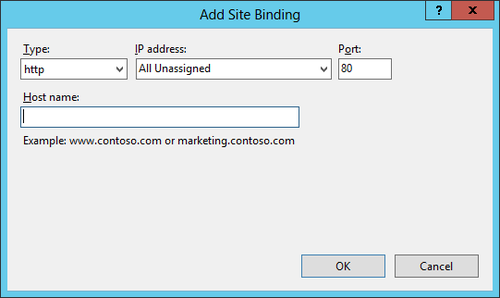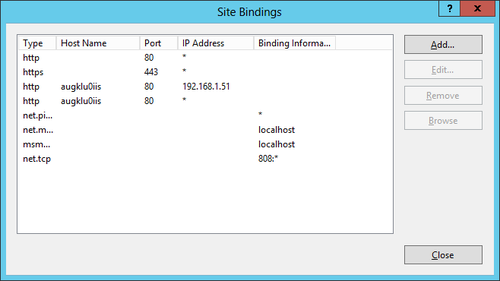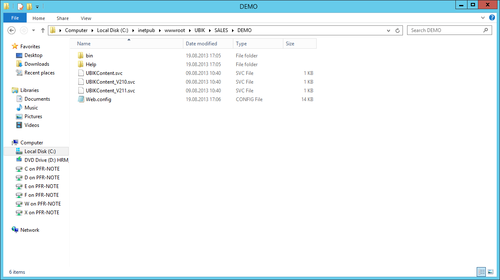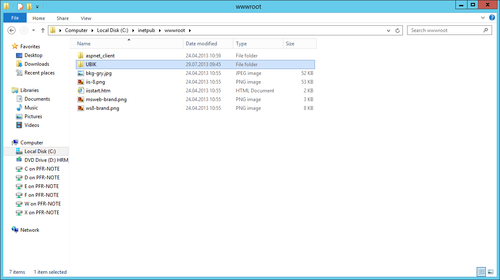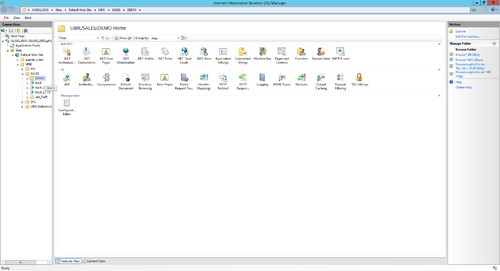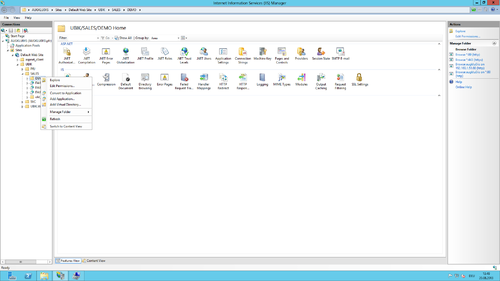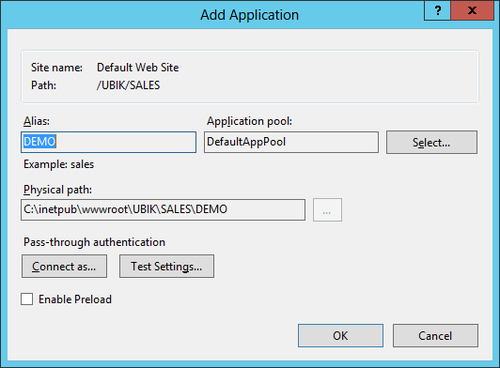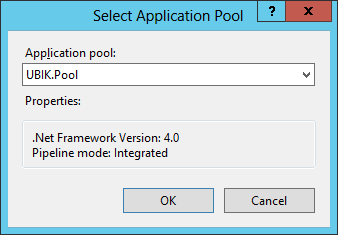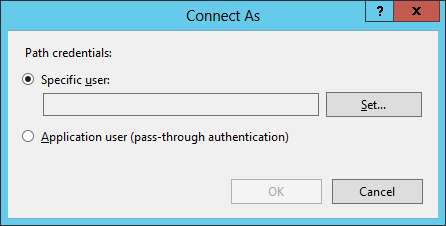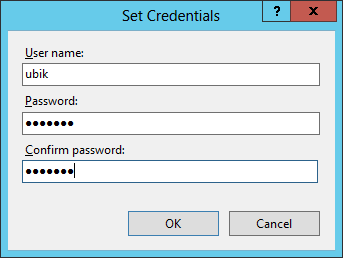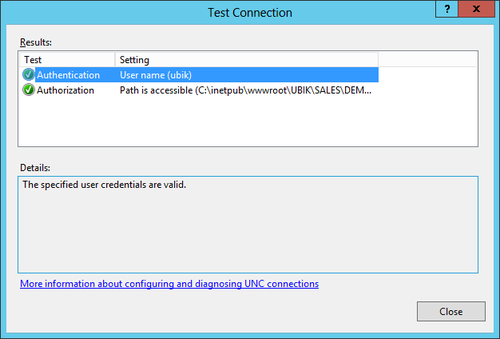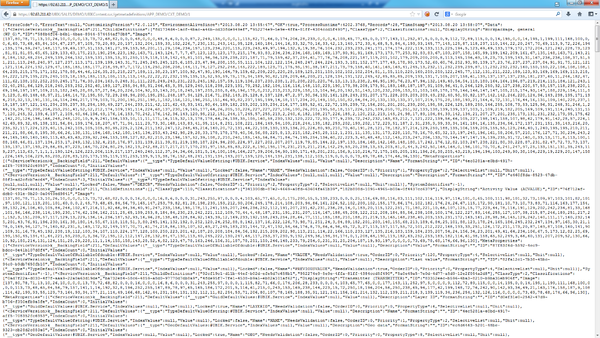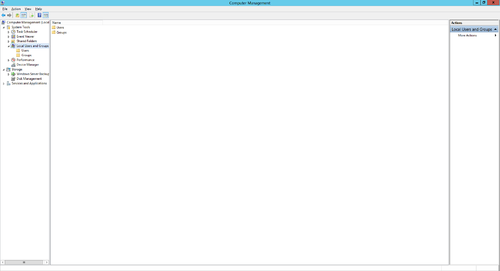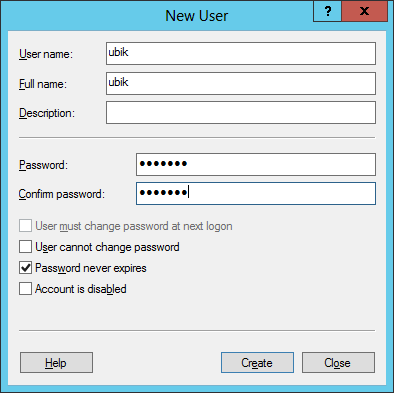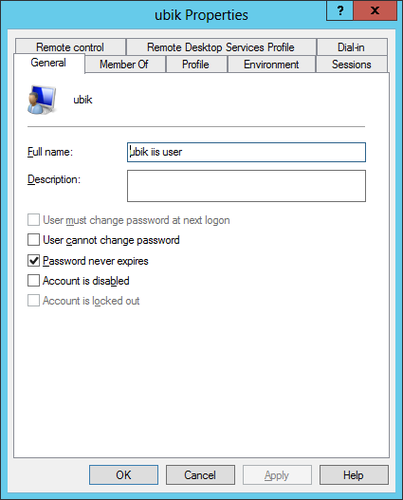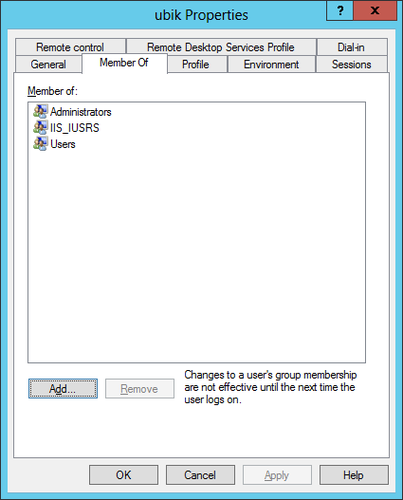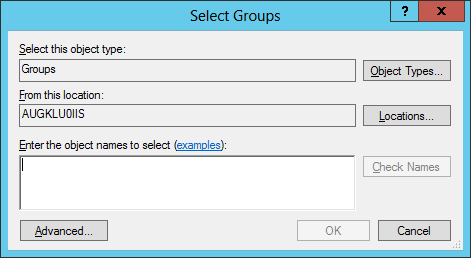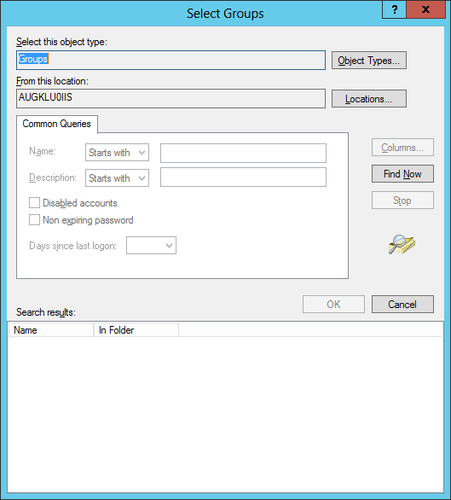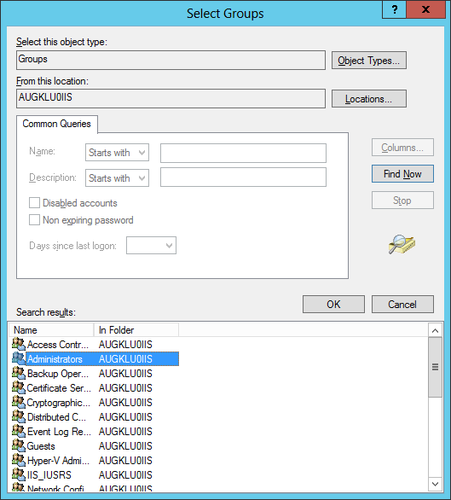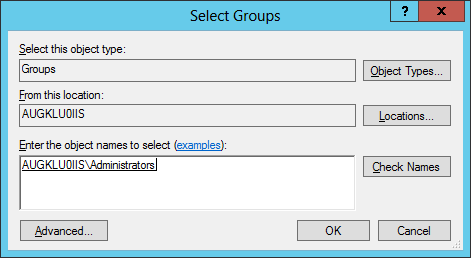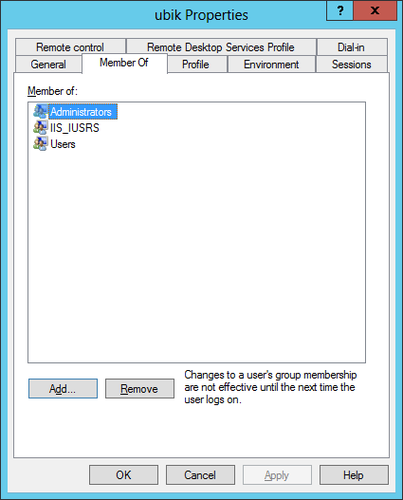Difference between revisions of "HowTo:Install UBIK Web Service"
(→Using a Virual Server) |
|||
| Line 11: | Line 11: | ||
* Use the "Add Roles" wizard to add the web server role | * Use the "Add Roles" wizard to add the web server role | ||
| − | By using the "Add Roles" wizard the default set of role services gets installed, which do not fit the requirements for {{UBIK}} web services. | + | === Required features === |
| + | By using the "Add Roles" wizard the default set of role services gets installed, which do not fit the requirements for {{UBIK}} web services. Additional IIS role services and features, such as Application Development or Health and Diagnostics, needs to be installed by selectint the check boxes associated with those features in the "Select Role Services" page of the wizard. | ||
| + | |||
| + | {{UBIK}} web service requires at least the following roles | ||
| + | * Microsoft .NET Framework 4 | ||
| + | * Microsoft .NET Framework 3.5.1 | ||
| + | * Webserver Application Development | ||
| + | |||
| + | and features | ||
| + | * HTTP Actication (WCF Services) | ||
<gallery widths="500" heights="500" > | <gallery widths="500" heights="500" > | ||
| Line 30: | Line 39: | ||
File:UI_10_IIS_Manager.png|[[10 IIS Manager]] | File:UI_10_IIS_Manager.png|[[10 IIS Manager]] | ||
</gallery> | </gallery> | ||
| − | |||
| − | |||
| − | |||
| − | |||
=== Add Application Pool === | === Add Application Pool === | ||
| − | + | An application pool is a group of one or more URLs that are served by a worker process or a set of worker processes. Application pools set boundaries for the applications they contain, which means that any applications that are running outside a given application pool cannot affect the applications in the application pool. | |
<gallery widths="500" heights="500" > | <gallery widths="500" heights="500" > | ||
Revision as of 11:39, 20 September 2013
This page describes how to set up an Microsoft Internet Information Server (IIS) and for a UBIK® web service on Microsoft Server 2012. The web service is used to publish data from the UBIK® database to a mobile device (eg mobile phone, tablet).
Installation of Microsoft IIS
Install server role
Start the server manager to install the Internet Information Services (IIS) on Windows Server 2012.
- Click Start, point to Administrative Tools and choose Server Manager.
- Click Roles Summary
- Click Add Roles.
- Use the "Add Roles" wizard to add the web server role
Required features
By using the "Add Roles" wizard the default set of role services gets installed, which do not fit the requirements for UBIK® web services. Additional IIS role services and features, such as Application Development or Health and Diagnostics, needs to be installed by selectint the check boxes associated with those features in the "Select Role Services" page of the wizard.
UBIK® web service requires at least the following roles
- Microsoft .NET Framework 4
- Microsoft .NET Framework 3.5.1
- Webserver Application Development
and features
- HTTP Actication (WCF Services)
Using a Virual Server
A physical server with Microsoft Server 2012 can be used as the host system as well as a virtual server. Use Hyper-V to install and operate serveral virtual servers and proceed with the web server installation similar as for a physical server.
Configuration of the Web Server
Add Application Pool
An application pool is a group of one or more URLs that are served by a worker process or a set of worker processes. Application pools set boundaries for the applications they contain, which means that any applications that are running outside a given application pool cannot affect the applications in the application pool.
Certificate
We need a certificate that guarantees us the security of the connection and recognition of authorized mobile devices. After the creation of the certificate on the server, it must be exported using the export function. Our developers need this certificate to integrate it into our mobile application.
Bindings
Now we create a binding, so we get the correct certificate to access to our IIS service from external.
Create new Web Service
Testing the new service
Optional
Local IIS-User
This member is necessary because it allows the external clients to have access to the IIS user entitle folder.
Microsoft .NET Framework 4
Is an older Microsoft Server version used, install the .NET Framework 4.

